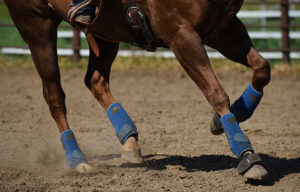Colic Surgery: Yesterday, Today, and Tomorrow
Many of today’s young riders will likely grow up with the notion that colic surgery is just another procedure their horses might undergo if the need arises. But it wasn’t long ago that such an undertaking was viewed largely "as a last resort, a prologue to an imminent death," said David E. Freeman, MVB, MRCVS, PhD, Dipl. ACVS. So how and why have horse owners’ and veterinarians’ attitudes toward colic surgery changed?
Freeman, a professor and Large Animal Surgery Service Chief at the University of Florida College of Veterinary Medicine, took a look back at colic surgery’s history, its success rates today, and how veterinarians can improve it further while presenting at the 2014 American Association of Equine Practitioners Convention, held Dec. 6-10 in Salt Lake City, Utah.
"An overview of colic surgery over the last 40 years suggests improvements in outcome, largely a result of early diagnosis and referral, allowing horses to arrive at referral hospitals in better overall systemic condition, as compared to years past," said Freeman. "However, closer inspection of information from different sources suggests that postoperative complication rates are still high, and long-term survival rates could improve further."
Short-Term Survival Rates
Freeman said it wasn’t long ago that veterinarians reported low colic surgery success rates. Veterinarians reported a 26% success rate for colic surgery in a paper published in 1971, while another paper evaluating surgeries from 1958 to 1971 reported a 72.9% mortality (death) rate, he said
Create a free account with TheHorse.com to view this content.
TheHorse.com is home to thousands of free articles about horse health care. In order to access some of our exclusive free content, you must be signed into TheHorse.com.
Start your free account today!
Already have an account?
and continue reading.

Written by:
Erica Larson
Related Articles
Stay on top of the most recent Horse Health news with












